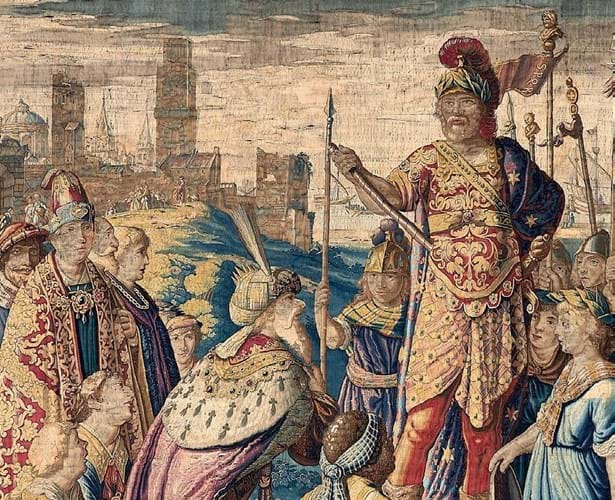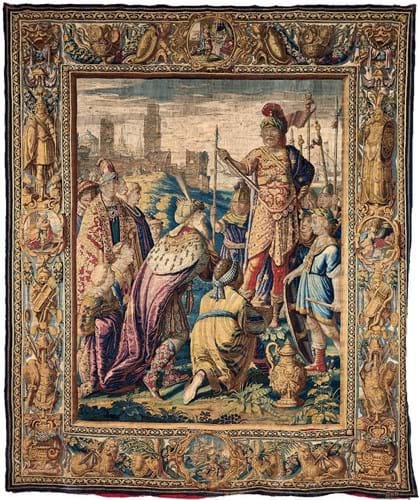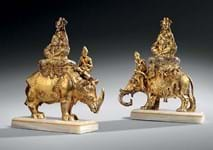This Flemish historical tapestry was the star lot, selling for £120,000 (plus 25% buyer’s premium).
Measuring a monumental 11ft wide x 13ft 4in high (3.35 x 4.06m high), its subject matter, replete with richly attired Oriental figures honouring a bearded Roman general, is the Triumph of Mark Antony over the Parthians in 33BC. It forms part of a group of tapestries based on the life of Mark Antony and Cleopatra thought to have been designed in 1621 by the Dutch Golden Age painter Karel van Mander the Younger (1579-1623).
While the sophisticated border decoration to this tapestry has a Brussels town marks in the lower selvedge, others in the cycle are variously attributed to the workshops of Pieter de Cracht (in Gouda and Schoonhaven) and Jacques Nauwincx (Schoonhoven).
Antony and Cleopatra
Another panel from the series, depicting Mark Antony fishing with a similar border of military trophies, festoons and vignettes, was sold at Christie’s in October 2012 for a more modest £18,000. However, while that example showed considerable fading and areas of restoration, the weave offered at Dreweatts retained remarkably vibrant reds, blues yellows and purples.
Works of art specialist Charlotte Schelling, who had nailed down the subject and its source just hours before the catalogue went to press, told ATG these strong colours and a striking pictorial composition she called “a wonderful Orientalist fantasy” were key.
Estimated at £8000-12,000, it prompted a long battle between phone bidders.

A detail of the Flemish historical tapestry depicting the Triumph of Mark Antony, £120,000 at Dreweatts.
The tapestry (which fits the description of a panel sold at Sotheby’s in 1965) was one of 570 lots from St Helen Hall in County Durham, the Palladian house that the architect William Whitfield purchased in 1967 when it was at imminent risk of demolition.
Over the course of the next four decades it was restored to its former glory and furnished with art and antiques by Whitfield and his partner Andrew Lockwood.
The contents, sold at Donnington Priory across two days on March 10-11, hammered around £1.25m.














